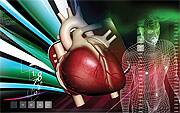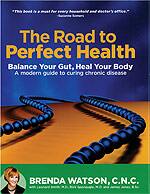Life Extension Magazine®
 | |
Neuropathy in Extremities Caused By Old Mitochondria? | |
Johns Hopkins scientists recently posited in a new study that the burning, tingling pain of neuropathy may affect feet and hands prior to other parts of the body because the powerhouses of nerve cells, called mitochondria, that supply the extremities age and become dysfunctional.* They hope this finding could lead to new ways to fight neuropathy, a condition that often accompanies other diseases including HIV/AIDS, diabetes, and circulatory disorders. Mitochondria for most cells in the body replace themselves every month or so, but mitochondria in nerve cells often live much longer to accommodate the sometimes long journey from where a cell starts growing to where it ends. “Our mitochondria age as we age, and they have even longer to travel in tall people,” study leader Ahmet Hoke, MD, PhD, said. “In people who are older or taller, these mitochondria in the longest nerves are in even worse shape by the time they reach the feet.” Hoke also noted that if this discovery is confirmed for other types of neuropathy, it could lead to mitochondria-specific ways to treat this condition. Ideally, doctors may be able to one day give a patient a drug that boosts the function of older mitochondria, thus boosting the performance of the nerve cells and reducing pain. —J. Finkel | |
| Reference | |
| * Annals of Neurology. 2011;69(1):100. | |
More Vitamin D Could Help Prevent Lung Cancer Recurrence | |
Researchers report in Clinical Cancer Research that an enzyme elevated in lung cancer that reduces the active form of vitamin D is associated with more aggressive tumors and worse survival.* Nithya Ramnath, MD, and colleagues evaluated tumor samples from 86 patients with lung adenocarcinoma to determine the level of CYP24A1, which encodes an enzyme that is overexpressed in many cancers. This enzyme breaks down calcitriol (1-alpha,25-dihydroxyvitamin D3), which has an antiproliferative effect in lung adenocarcinoma. The team found that CYP24A1 expression was 8 to 50 times higher in cancerous compared to healthy lung tissue. Patients with higher levels of CYP24A1 had an increased likeliness of aggressive tumors and a 42% chance of survival after five years compared with an 81% chance for those with low CYP24A1. Scientists are now attempting to identify compounds that block CYP24A1, which would increase vitamin D’s anticancer potential and could be combined with vitamin D treatment. Editor’s note: Dr. Ramnath remarked that, “A natural compound like vitamin D is attractive because it has few side effects, but it’s even better if we can determine exactly who would benefit from receiving vitamin D.” —D. Dye | |
| Reference | |
| * Clin Cancer Res. 2011 Feb 15;17(4):817-26. | |
Green Tea May Be Alzheimer’s Disease Fighter | |
| Recent research by scientists at Newcastle University suggests that regularly drinking green tea could protect the brain against developing Alzheimer’s and other forms of dementia.* The study was led by Dr. Ed Okello and was published in the academic journal Phytomedicine. In addition to its potential as an Alzheimer’s fighter, the study also suggests the tea could play a vital role in protecting the body against cancer. While hydrogen peroxide and a protein known as beta-amyloid have been known to play a major role in the development of Alzheimer’s disease, past studies have shown that compounds found in green or black tea called polyphenols have neuroprotective properties, binding with the toxic compounds and protecting the brain cells. “What was really exciting about this study was that we found when green tea is digested by enzymes in the gut, the resulting chemicals are actually more effective against key triggers of Alzheimer’s development than the undigested form of the tea,” explains Dr. Okello, who is based out of the School of Agriculture, Food and Rural Development at Newcastle University. “In addition to this, we also found the digested compounds had anti-cancer properties, significantly slowing down the growth of the tumor cells which we were using in our experiments.” —J. Finkel | |
| Reference | |
| * http://www.sciencedaily.com /releases/2011/01/110105194844.htm. | |
Few Meet Definition of Optimal Heart Health | |
The outcome of a study recently published in the journal Circulation has resulted in the dismal conclusion that only one in 1,933 Americans may be meeting the American Heart Association’s criteria for good heart health.* Steven E. Reis, MD, and his associates analyzed data from 1,933 men and women who participated in the Heart SCORE study. Surveys, examinations, and test results provided information concerning the presence of the following factors: not smoking, meeting physical activity and healthy diet goals, having a body mass index lower than 25, untreated cholesterol level of less than 200, blood pressure of lower than 120/80 mmHg and fasting glucose below 100 mg/dL. Only one participant met all seven criteria of ideal heart health and fewer than 10% of participants had five or more components. “Of all the people we assessed, only one out of 1,900 could claim ideal heart health,” stated Dr. Reis. Editor’s note: “Our next step is to analyze additional data to confirm this and, based on the results, try to develop a multifaceted approach to improve health,” Dr. Reis added. —D. Dye | |
| Reference | |
| * Circulation. 2011 Mar 1;123(8):850-7. |
The Road to Perfect Health: Balance Your Gut, Heal Your Body – A modern guide to curing chronic disease | ||
Brenda Watson, C.N.C., is the author of the New York Times bestselling book, The Fiber35 Diet. She has written six books, although her newest publication, The Road to Perfect Health: Balance Your Gut, Heal Your Body, is more similar to a gut-brain connection bible than a book. Watson, one of the leading digestive care experts in the United States, has compiled a book that addresses 50 common health conditions. In addition, she discusses how digestive imbalances can lead to a host of serious illnesses outside of your digestive system, and she also offers natural options that can help realign the body’s digestive and overall balance. The subtitle of the book is “A modern guide to curing chronic disease,” and at first glance, it seems as though that’s a lot of ground to cover in one book. Once you open the first few pages however, you see that the book is organized in such an efficient way that tackling the many issues that can be caused by poor gut function is not going to be a problem. In fact, in the preface, Watson answers the first question that many people may be thinking when they encounter this publication: What does gut health have to do with overall sickness? “Gut health is the core of our health. It is where we extract the nutrients from our food that feeds the cells and tissues and organs of our body. Think about it. Every bite of food we eat, every sip of liquid we drink goes to the gut first.” Using this explanation as a jumping off point, Watson leads readers into her book with the first chapter, titled: “Basics of Digestion.” This is an excellent primer that explains everything from peristalsis to beneficial bacteria and gut immunity. Following this foundation of knowledge, the chapters cover nearly every system of the body, including the brain and nervous system, the cardiovascular system, the digestive system, the endocrine system, the genitourinary system, the immune system and infections, the musculoskeletal system, the respiratory system, skin conditions, environmental conditions, and cancer. Each chapter is then broken up into conditions that may be caused or exacerbated by poor digestive health. The conditions are explained simply, as are the signs and symptoms that go along with them. Special highlighted sections allow expert medical professionals in that particular field to discuss their experiences with a certain condition and in some cases go over a few case studies to give the reader a better idea of what they may be dealing with. At the culmination of each section discussing a certain condition, Watson gives her bottom line assessment of the condition, as well as how to cope with it. She writes about what other illnesses you should rule out, what tests you should order to confirm this illness, and how diet and lifestyle can affect it. Following that is a table that lists the supplements to take to combat the condition, including the dosage, the benefit, and her additional comments. For instance, if a reader has diarrhea, she recommends 10 grams of L-glutamine powder with gamma- oryzanol split into two doses on an empty stomach with water for two weeks. She writes that it helps repair and keep digestive lining healthy and that it is best taken in loose powder form for optimum contact with the esophageal lining. This attention to detail is evident in section after section of the book, making it a must-buy for those who seek to improve their health, cure a chronic infection, or prevent one from ever manifesting. —Brenda Watson, C.N.C. with Leonard Smith, M.D., Rick Sponaugle, M.D., and Jamey Jones, B. Sc. |









